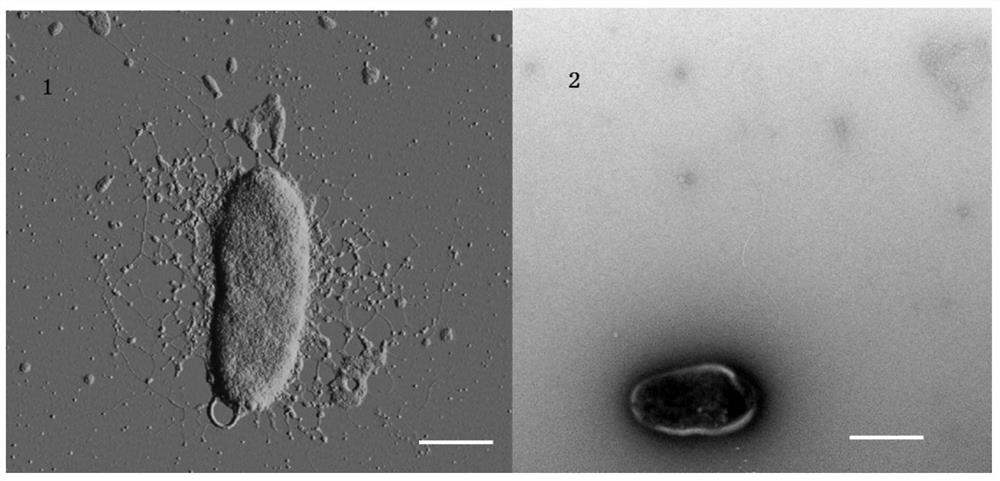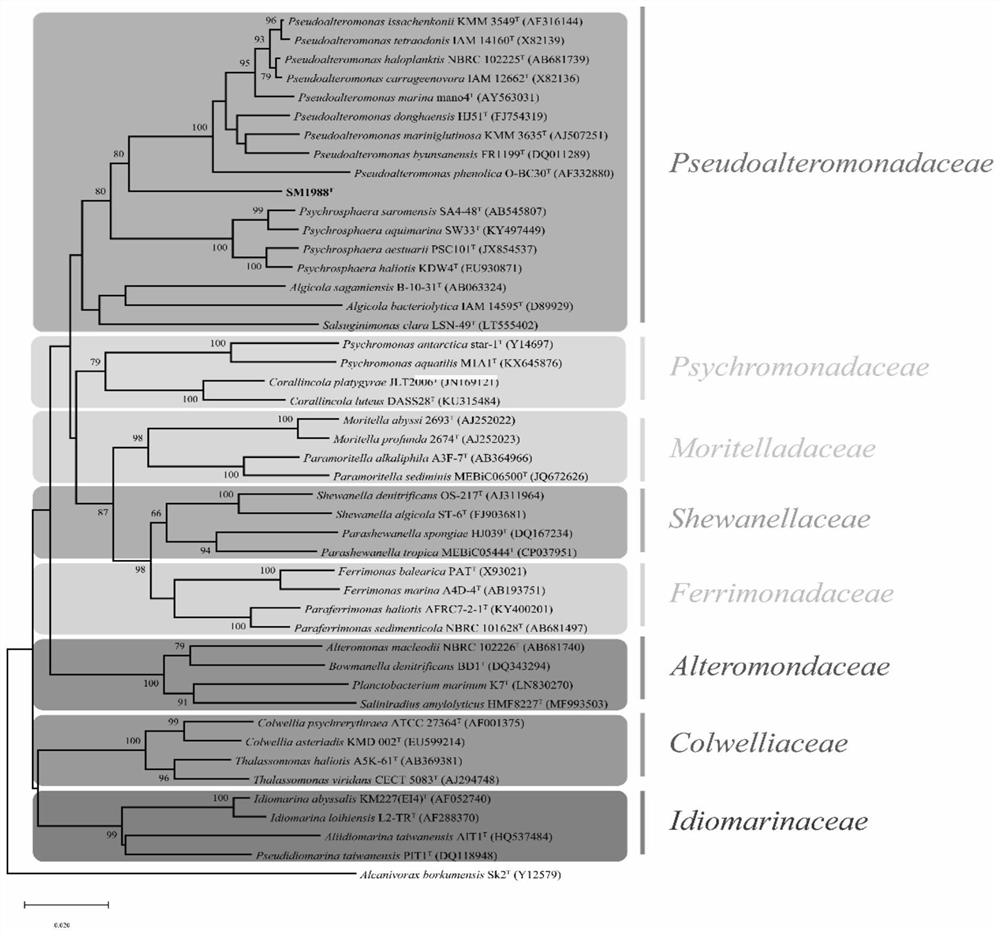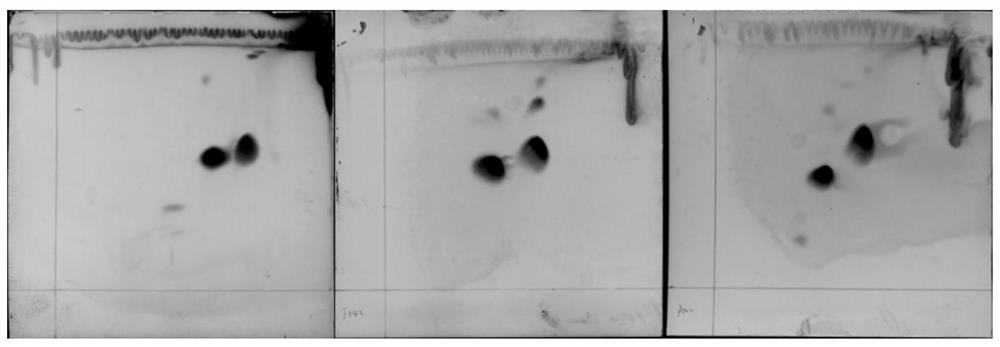Strain for producing high-efficiency collagenase and application thereof
A collagen and strain technology, applied in the direction of animal/human proteins, microorganism-based methods, enzymes, etc., can solve the problems of lack of efficient collagenase strains, low enzyme production activity, etc., and achieve easy absorption and utilization, good economic benefits, molecular weight small effect
- Summary
- Abstract
- Description
- Claims
- Application Information
AI Technical Summary
Problems solved by technology
Method used
Image
Examples
Embodiment 1
[0034] Screening and isolation of embodiment 1 bacterial strain
[0035] (1) Sample collection
[0036] P. spinosa was collected from the rocky beach in the intertidal zone (N36.22°, E120.41°) along the coast of Qingdao, placed in an ice box and brought back to the laboratory.
[0037] (2) Enrichment and domestication
[0038] Use sterilized seawater to gently wash the algae body, cut the algae body into 1 / 10TYS liquid medium with sterile scissors, and shake it for 10 minutes at 25 ° C and 180 rpm in a shaker to obtain enriched bacteria.
[0039] (3) Screening and isolation of strains
[0040] The bacterium solution enriched in step (2) according to 10 1 , 10 2 , 10 3 , 10 4 , 10 5 Stratified dilutions were carried out, and then inoculated on the screening medium plate, cultured at 25°C for 48 hours, and the strains that formed the degradation circle were picked out, and further purified by plate streaking method to obtain the highly efficient ability to degrade collag...
Embodiment 2
[0044] The identification of embodiment 2 bacterial strain morphology
[0045]Streak the bacterial strain screened and isolated in Example 1 onto a TYS solid medium plate, then invert the plate, and cultivate it at a temperature of 25°C for 24 hours, observe and record the growth of the colonies on the plate, and the atomic force microscope of the colony morphology (AFM) images and transmission electron microscope (TEM) images, such as figure 1 shown.
[0046] Depend on figure 1 It can be seen that on the TYS medium plate, the bacterial colony is white (yellow in the later stage), round, with neat edges, and the colony is wet and sticky (hard in the later stage), indicating that it is smooth and moist and opaque; Gram staining is red, indicating that It is a Gram-negative bacterium; the cells in the atomic force microscope (AFM) and transmission electron microscope (TEM) images are rod-shaped, with a length and width of 0.8-1.5×0.3-0.5 μm, single cells, polar flagella, and c...
Embodiment 3
[0047] Physiological and biochemical identification of the bacterial strain of embodiment 3
[0048] The physiological and biochemical characteristics of the strains screened and isolated in Example 1 were identified by routine physiological and biochemical experiments and API 20NE and ZYM reagent strips.
[0049] The identification analysis results are shown in Table 1.
[0050] Comparison of physiological and biochemical characteristics of the bacterial strains isolated in Table 1 Example 1 and the closely related bacterial strains of Pseudoalteromonas family
[0051]
[0052]
[0053]
[0054]
[0055]
[0056] In the table: 1 is the isolated bacterial strain of embodiment 1; 2 is bacterial classification Pseudoalteromonas mariniglutinosaKMM 3635 T ; 3 is strain Psychrosphaera aestuarii PSC101 T ; 4 is bacterial strain Psychrosphaeraaquimarina SW33 T ; 5 is the strain Psychrosphaera haliotis KDW4 T ; 6 is strain Psychrosphaerasaromensis SA4-48 T ; 7 is t...
PUM
 Login to View More
Login to View More Abstract
Description
Claims
Application Information
 Login to View More
Login to View More - R&D
- Intellectual Property
- Life Sciences
- Materials
- Tech Scout
- Unparalleled Data Quality
- Higher Quality Content
- 60% Fewer Hallucinations
Browse by: Latest US Patents, China's latest patents, Technical Efficacy Thesaurus, Application Domain, Technology Topic, Popular Technical Reports.
© 2025 PatSnap. All rights reserved.Legal|Privacy policy|Modern Slavery Act Transparency Statement|Sitemap|About US| Contact US: help@patsnap.com



